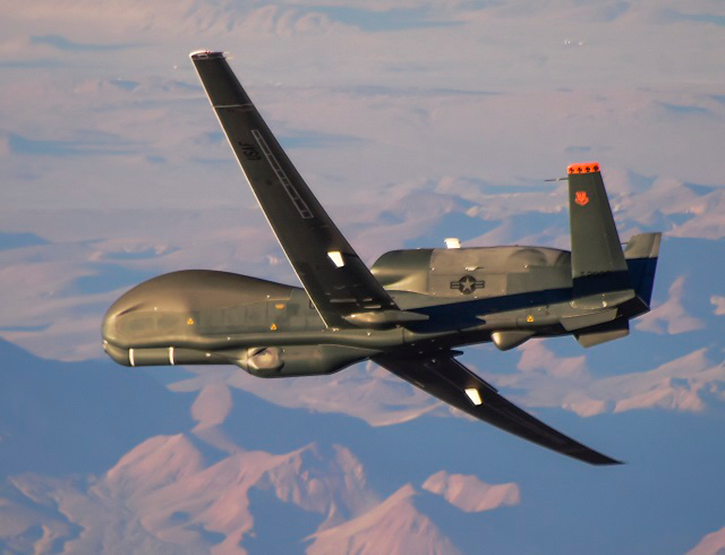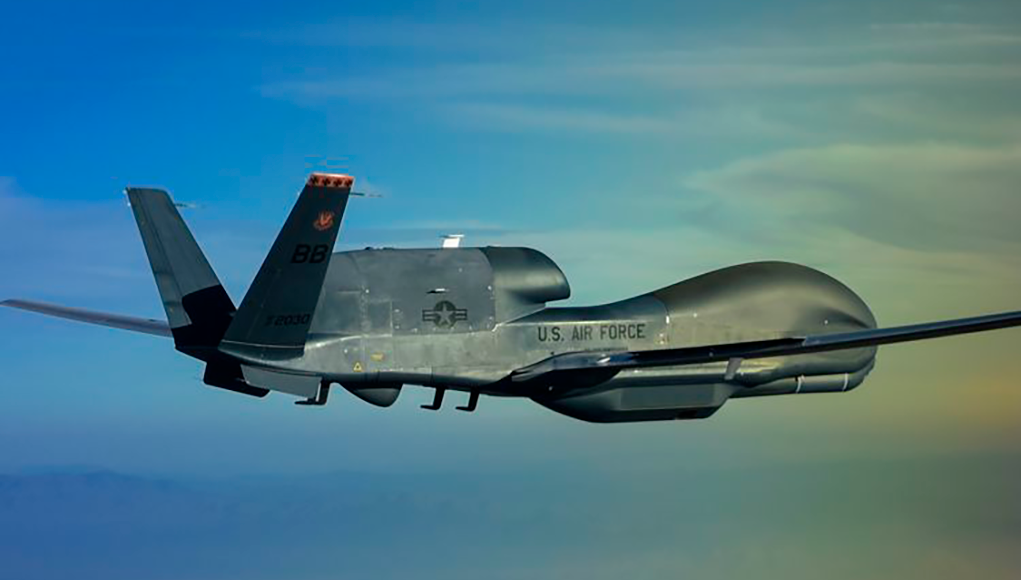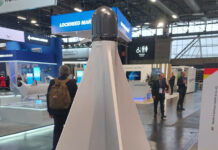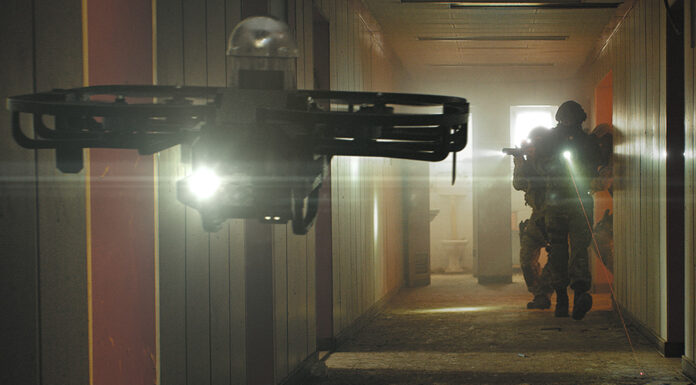Northrop Grumman and United Technologies Corp. have recently completed the first flight test of the MS-177 long-range, multi-spectral imaging (MSI) sensor on the RQ-4B Global Hawk Unmanned Aircraft System (UAS). The MS-177 sensor is designed to provide capabilities to not only “find” targets using broad area search and different sensing technologies, but to also fix, track, and assess targets through its agility and multiple sensing modalities.
The test was held on February 8 at Northrop Grumman’s Palmdale, California, facility. The flight tests marked the first time the sensor has been flown on a high altitude long-range autonomous aircraft and extend the mission capabilities of the system. It was the first step forward in the MS-177 Family of Systems (FoS) roadmap that includes multi-spectral imaging, hyperspectral imaging and customer unique mission capable variants. Following that flight the MS-177 has entered a six-month integration, testing and qualification phase before official fielding in late 2017. Sensors of this type are already operational with other US Air Force platforms. The MS-177 testing is expected to continue through the first half of 2017.
“The MS-177 is a game-changer in airborne surveillance,” said Kevin Raftery, vice president of ISR and Space Systems at UTC Aerospace Systems. “During its first flight on Global Hawk, MS-177 demonstrated its ability to take the aircraft’s imaging capabilities to a new level in terms of coverage area, quality and accuracy.”
The MS-177 FoS sensor will provide better image resolution over a longer range and greater coverage area per hour than any other Intelligence, Surveillance and Reconnaissance (ISR) sensor in the U.S. military inventory. It will also be able to operate from multiple ISR platforms, satisfying military requirements for both land and maritime missions.
UTC Aerospace Systems was contracted by the U.S. Air Force in 2016 to support the integration, testing and fielding of the baseline MS-177 sensor variant on Global Hawk to sustain and eventually replace mission capabilities currently supported by the Lockheed Martin U-2S. MS-177 has already completed successful flight demonstrations on the E-8C JSTARS aircraft in 2010 and from a High Altitude Long Endurance (HALE) UAS in 2016. The next variant, the MS-177A sensor system, will be fielded on Global Hawk in late 2019.
The successful flight test at Northrop Grumman’s Palmdale, California facility follows the demonstrations of two sensors previously unavailable on the Global Hawk. Northrop Grumman successfully flew a SYERS-2 intelligence gathering sensor in February 2016 and has recently completed flight tests of the Optical Bar Camera.
The MS-177 is the next evolution of UTC Aerospace Systems’ Senior Year Electro-optical Reconnaissance System (SYERS) sensor, currently flown on U-2S aircraft. The SYERS-2 sensor pivots from side to side, while the MS-177 also squints forward and backward, enabling new imaging capabilities. The MS-177 sensor will ultimately be converted into the MS-177A and will offer further expanded spectral performance, enhancing data identification capabilities and assisting in the collation of improved and actionable intelligence.





















